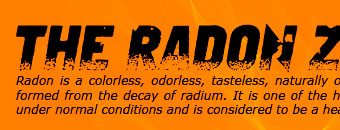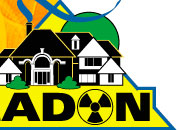 |
 |
 |
||||
|
||||||
| Call: 417-844-0942 | ||||||
|
»Radioactive Wastes from Oil and Gas Drilling This page describes the radioactive waste created during the oil and gas drilling process. Overview The oil and gas industry provides three-fifths of the energy for the United States. When most of us drive a car, turn on a light bulb, or cook on a stove, a large portion of the energy we use comes from the fossils of plants and animals. While fossil fuels are chemical sources of energy, the processes used to extract them from the earth often generate radioactive waste. Even though we use them on a daily basis, most people know little about the processes that take oil and gas from the ground to produce energy. These processes may leave behind waste containing concentrations of naturally-occurring radioactive material (NORM) from the surrounding soils and rocks. Once exposed or concentrated by human activity, this naturally-occurring material becomes Technologically-Enhanced NORM or TENORM. Radioactive materials are not necessarily present in the soils at every well or drilling site. However in some areas of the country, such as the upper Midwest or Gulf Coast states, the soils are more like to contain radioactive material. Radioactive wastes from oil and gas drilling take the form of produced water, drilling mud, sludge, slimes, or evaporation ponds and pits. It can also concentrate in the mineral scales that form in pipes (pipe scale), storage tanks, or other extraction equipment. Radionuclides in these wastes are primarily radium-226, radium-228, and radon gas. The radon is released to the atmosphere, while the produced water and mud containing radium are placed in ponds or pits for evaporation, re-use, or recovery. The people most likely to be exposed to this source of radiation are workers at the site. They may inhale radon gas which is released during drilling and produced by the decay of radium, raising their risk of lung cancer. In addition, they are exposed to alpha and gamma radiation released during the decay of radium-226 and the low-energy gamma radiation and beta particles released by the decay of radium-228. (Gamma radiation can also penetrate the skin and raise the risk of cancer.) Workers following safety guidance will reduce their total on-site radiation exposure. Most states and federal land management agencies currently have regulations which control the handling and disposal of radionuclides which may be present in production sites. However, the general public may be exposed to TENORM from oil and gas drilling when sites that were active prior to the mid-1970s, when regulations went into effect, are released for public use. It is likely that a number of these sites contain radioactive wastes. The public may also be exposed when contaminated equipment is reused in construction projects. |
|
|||||